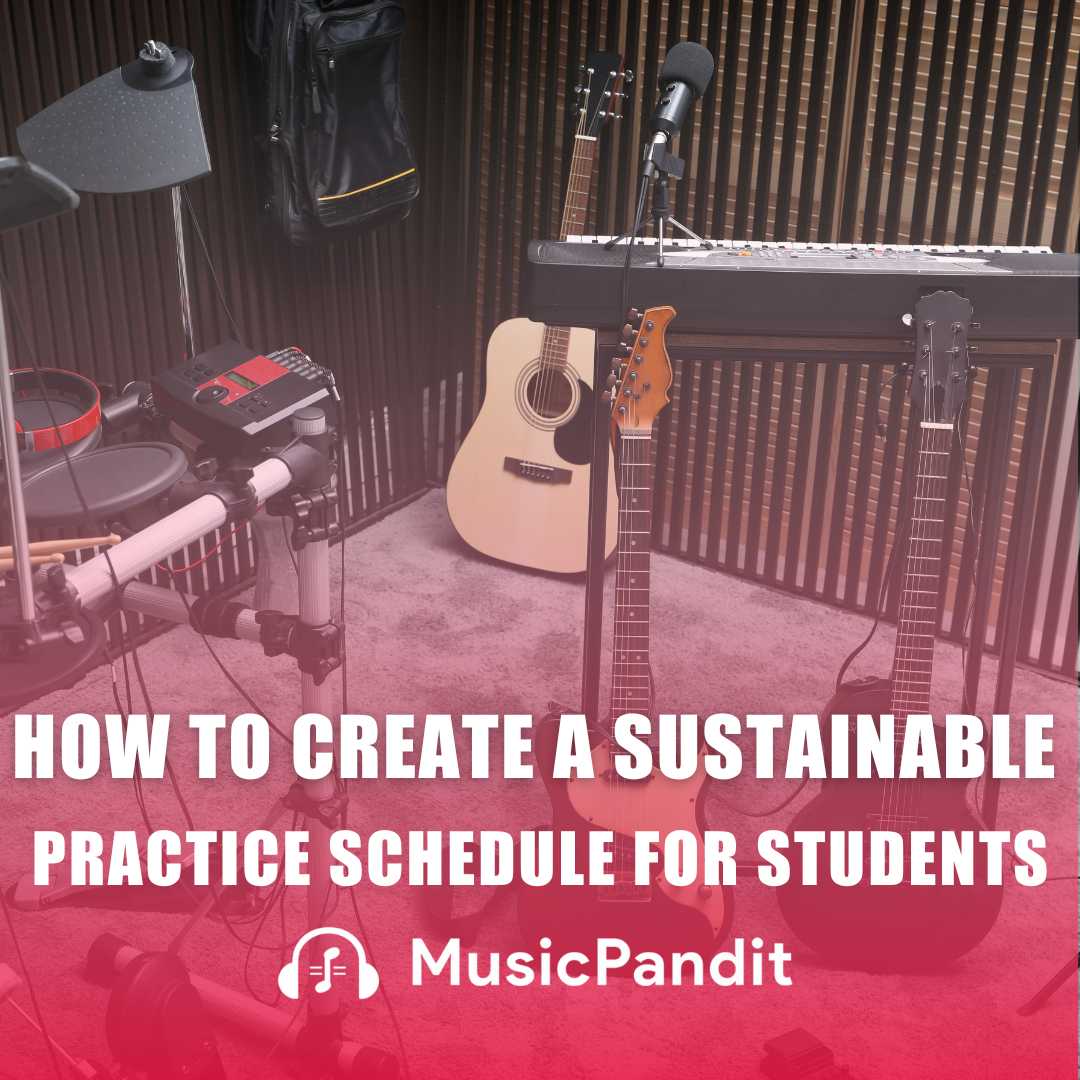Do you want your child to become better at guitar and unlock their full musical potential? Teaching guitar scales is one of the best ways to build a strong foundation in music. Scales improve finger strength, coordination, and give your child the tools they need to play melodies and solos with confidence!
Well, introducing children to guitar scales can be an exciting and educational experience, helping them develop a deeper understanding of music while improving their technical abilities. As parents, you play a crucial role in making this process enjoyable and accessible for your children. This guide will walk you through the basics of guitar scales, why they are important, and how you can introduce them to your child in a way that keeps them engaged and motivated.
Why is it Important to Learn Guitar Scales?
Learning guitar scales is vital for numerous reasons. Firstly, scales are the building blocks of music. They shape the basis for melodies, harmonies, and solos. Understanding scales helps in growing a better sense of pitch, timing, and rhythm. For younger beginners, grasping scales early on could make learning more advanced concepts easier later.
Moreover, working towards scales can improve finger power and dexterity. This is mainly crucial for youngsters because it enables them to increase the essential physical abilities to play the guitar proficiently. Additionally, scales are useful resources in information on the fretboard, permitting kids to navigate it with more self belief. To put it in simple words, once your child becomes familiar with scales, they can begin to use them for improvising and soloing over chord progressions.
The age at which a child can begin learning guitar scales varies based on their level of maturity and coordination. Children as young as 8 can start playing simplified versions of scales, but they should always be introduced in a playful and engaging way to maintain interest.
Tips for Parents:
- Keep it Simple: For younger children, start with just a few notes and focus on major or pentatonic scales, which are easier to grasp.
- Make it Fun: Turn scale practice into a game or a challenge. For example, see how many notes your child can play correctly in a row or how fast they can play a scale without mistakes.
- Praise Progress: Encouragement is key. Celebrate small victories, such as completing a scale or mastering a new fingering.
Getting Ready to Teach Guitar Scales
Before diving into the scales, it’s critical to put together both you and your child for the learning system. Here are some steps to get commenced:
- Choose the Right Guitar: Ensure the guitar is appropriate to your child’s age and size. A smaller guitar might be more comfortable and manageable for younger beginners.
- Basic Knowledge: Ensure your child has a primary knowledge of the guitar, including how to hold it, the names of the strings, and the way to study basic guitar tablature.
- Set Up a Practice Space: Create a comfy and distraction-free exercise location. Good lighting fixtures and a cushty chair can make exercise classes extra fun.
- Guitar Scale Diagrams: Have guitar scale diagrams accessible. These visual aids can help your child understand wherein to locate their fingers and how to move through the scales.
The Concept of Scales
Before jumping into playing scales, it’s essential to explain what scales are and why they matter. A scale is a series of notes ordered by using pitch, either ascending or descending. Scales are fundamental in music because they form the basis of musical pieces and improvisation.
There are various varieties of scales, however the maximum common ones include:
- Major Scales: These have a glad and shiny sound.
- Minor Scales: These have a sadder or greater critical tone.
- Pentatonic Scales: These encompass 5 notes and are often used in rock and blues songs.
- Blues Scales: These add a “blue” be aware to the pentatonic scale, giving it an exceptional sound.
Understanding these fundamental kinds of scales is important as they offer a basis for your child’s musical education.
How to Teach Guitar Scales
Introducing scales doesn’t have to be complicated. Your child can focus on one scale at a time, and gradually build on that foundation as he/she gains confidence.
Step-by-Step Approach:
- Start with the Major Scale: The C major scale is a great starting point. They can learn how to play the notes on a single string first, which simplifies the learning process.
- Use Visual Aids: Diagrams or color-coded fretboards can be helpful for younger children to understand where to place their fingers. Associating notes with colors or symbols can make learning fun.
- Practice on a Single String: To avoid overwhelming your child, practice scales on one string at a time before moving on to full scales that cover multiple strings.
- Slow and Steady: Encourage your child to play slowly and carefully to ensure they hit the right notes and develop muscle memory.
- Incorporate Rhythms: Add a rhythmic element to scale practice. For example, have your child play each note twice in a row, or try playing along with a metronome to build a sense of timing.
Teaching the Initial Scale: The C Major Scale
The C Major Scale consists of the notes C, D, E, F, G, A, and B. Here’s how you may train it step-by way of-step:
- Introduction: Get them introduced to C Major Scale and how it is made from natural notes (no sharps or flats).
- Guitar Scale Diagram: You can show a guitar scale diagram for the C Major Scale. Help them figure out the foundation note (C) and how the opposite notes follow in series.
- Finger Placement: Guide your child on finger placement. Start with the third finger at the third be troubled of the A string (C note), after which move to the second one finger on the second one agonise of the D string (E note), and so forth.
- Practice: Encourage your child to practise the scale slowly, making sure each note is clear. Use a metronome to assist maintain a steady rhythm.
- Repetition: Repetition is fundamental. Have your child play the scale up and down the fretboard multiple times.
Creating an Enjoyable and Engaging Practice Environment and Expanding to Other Scales
Maintaining your child’s interest and enthusiasm is crucial in their musical journey. Here are a few guidelines to make exercise periods enjoyable:
- Short Sessions: Keep their exercise sessions short and sweet. Aim for 10-15 minutes to start, steadily increasing the period as your child’s hobby and interest develop.
- Visual Aids: Diagrams or colour-coded fretboards can be helpful for younger children to understand where to place their fingers. Associating notes with colours or symbols can make learning fun.
- Positive Reinforcement: Praise your child’s development and celebrate their achievements, no matter how small.
- Interactive Tools: Use interactive tools and apps which can make studying scales more attractive.
Once your child is comfortable with the C Major Scale, you could introduce them to other scales, which include the G Major Scale, A Minor Scale, and the Pentatonic Scale. Use guitar scale diagrams to demonstrate those new scales and follow the identical coaching standards.
Overcome Common Challenges
Learning guitar scales can be difficult for young novices. Here are some unusual troubles and the way to address them:
- Finger Strength and Dexterity: Building finger power takes time. Encourage each day practice and physical games that concentrate on finger muscle tissues.
- Coordination: Playing scales calls for coordination among each arm. Slow and constant practice allows in developing this ability.
- Frustration: It’s regular for children to experience frustration in the event that they don’t get it right away. Be an affectionate person, offer encouragement, and remind them that it’s ok to make errors.
- Understanding Theory: Some kids might conflict with the theoretical component of scales. Use easy language and visible aids to give an explanation for standards.
- Oversaturation: Don’t overload your child with too much information at once. Focus on one scale at a time, and allow them to fully absorb the material before moving on.
- Ignoring Proper Technique: Ensure your child is using the correct fingerings and playing posture. Good technique early on will prevent bad habits from forming.
- Lack of Variety: Mix up scale practice with other activities, such as learning songs or playing simple melodies. This prevents boredom and helps your child see the practical application of scales in music.
Tips for Lifelong Learning
Instilling a love for song and mastering on your child could have lifelong blessings. Here are some hints to make certain they remain engaged and motivated:
- Variety: You can introduce quite a few musical genres and patterns. This continues mastering exciting and exposes your child to distinctive musical principles.
- Goals: Rather than expecting your child to master an entire scale at once, break it down into manageable chunks. For example, focus on just one octave at first, and then gradually add more notes.
- Performances: Encourage your child to carry out in front of their own family and friends. This builds self assurance and affords an experience of feat.
- Continuous Learning: Emphasise that studying music is a lifelong journey. There’s continually something new to learn and explore.
- Music Community: Join music groups or communities in which your child can engage with other younger musicians. This fosters a sense of community and shared learning.
Conclusion
Introducing your child to guitar scales is an essential step in their musical journey. Scales provide a foundation that will help them with everything from learning melodies to improvising solos. By taking a gradual and enjoyable approach, you can ensure that your child not only learns the technical aspects of scales but also develops a lifelong love for playing the guitar.
Make practice sessions fun and varied, celebrate their progress, and always remember that learning music should be an enjoyable experience for your child. With your support and encouragement, your child will build a strong foundation in guitar playing that will serve them for years to come.
While there are many tools available to help your child learn guitar scales, we do it in a more engaging way. Get more information about the guitar lessons on our course page.















